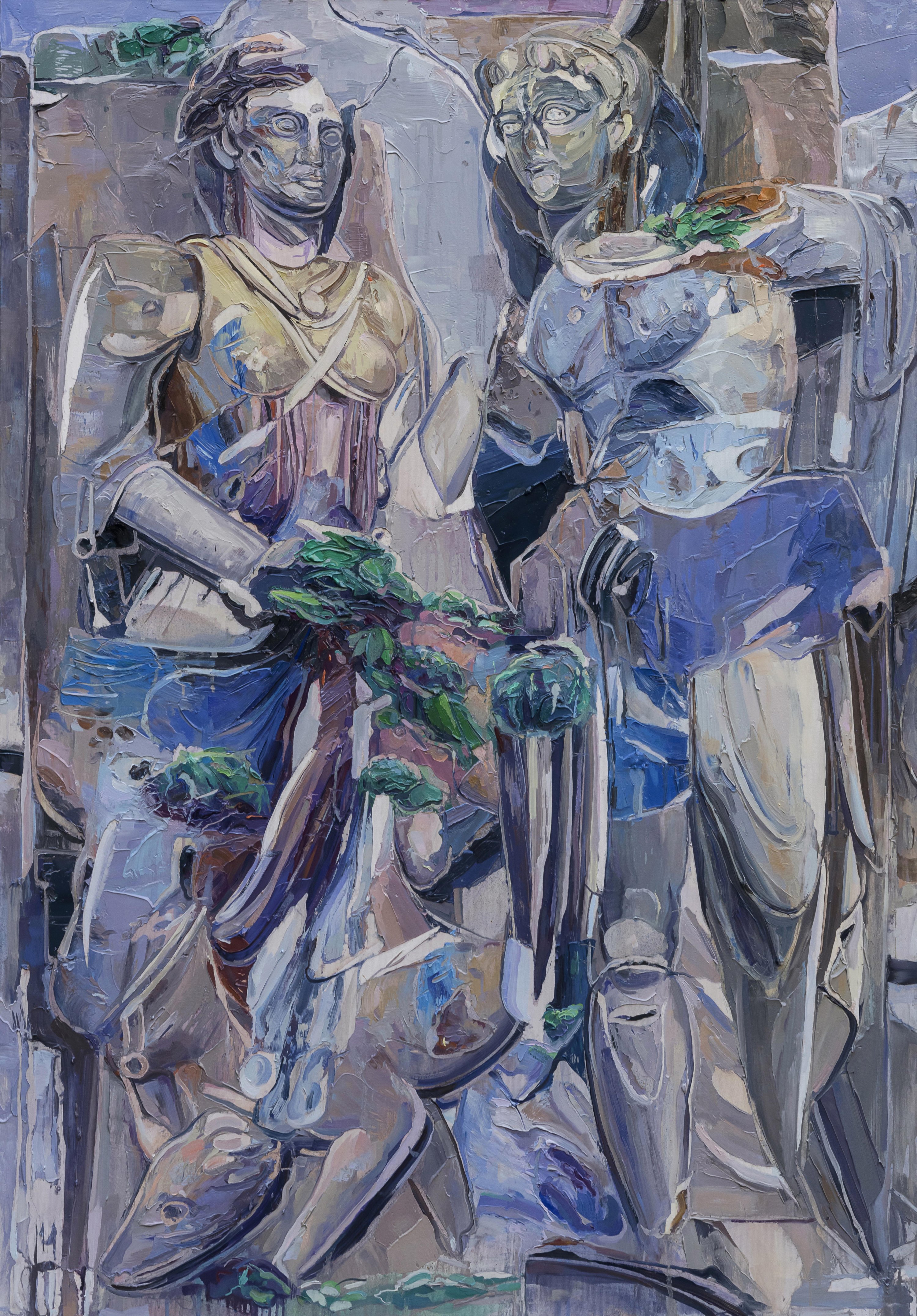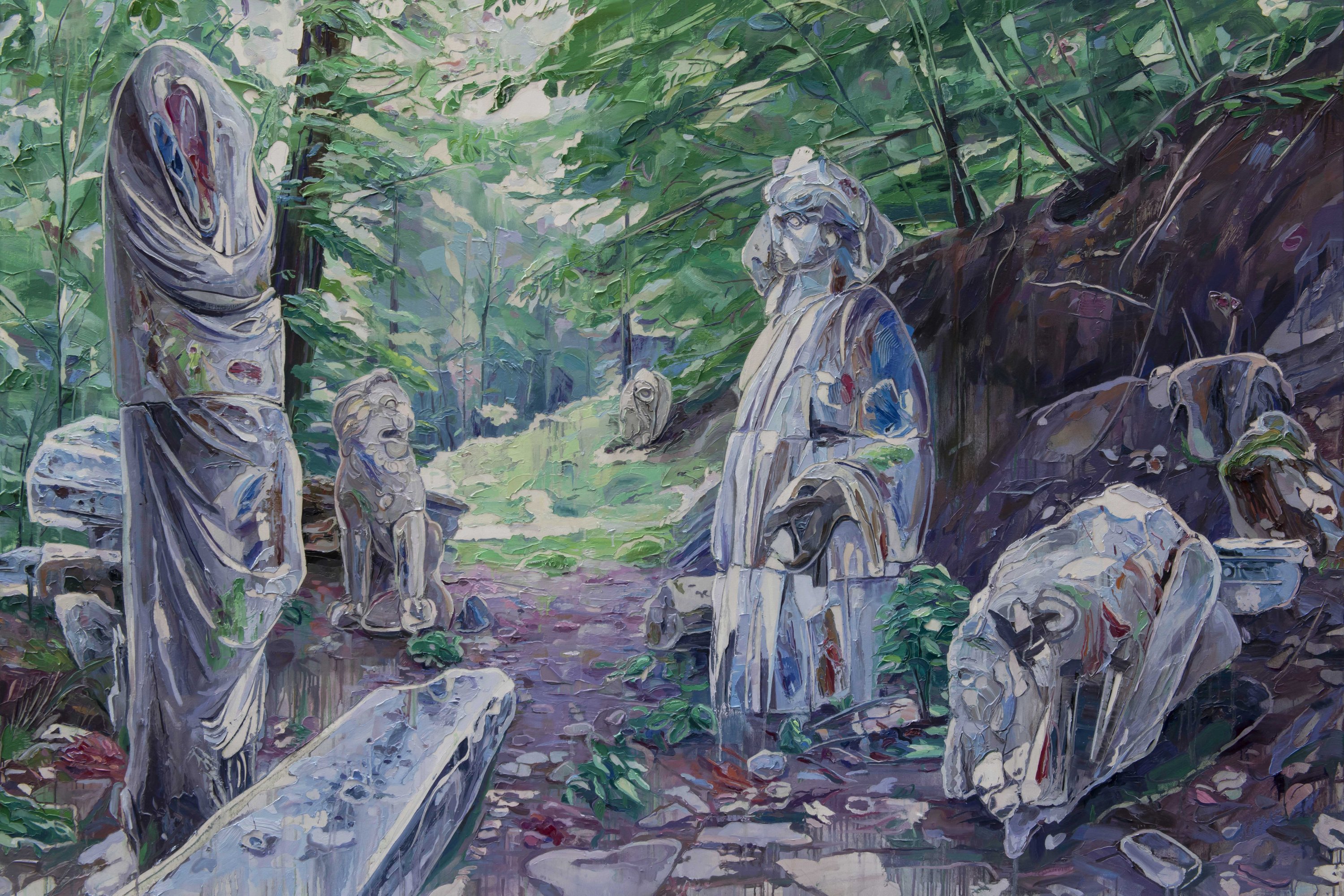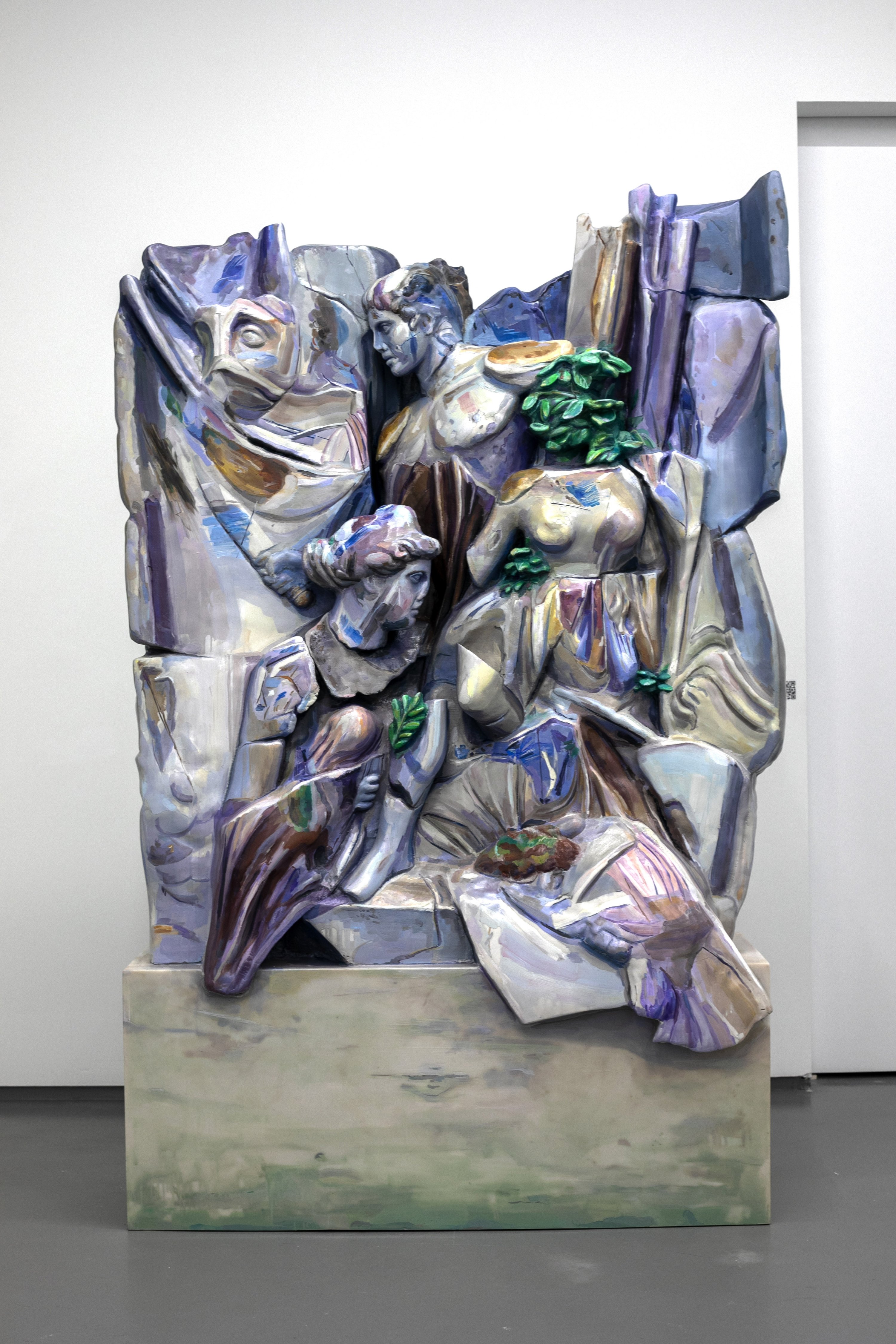© Turkuvaz Haberleşme ve Yayıncılık 2026
Beautifying the world with a wide range of artistic works is something divine and admirable. How can one become an artist? Almost every successful artist probably went through various experiences while turning art into a career and has different stories to tell at this point.
But I am more curious about the feeling that dragged them to the world of aesthetics rather than their clumsy journey of fulfilling the educational requirements, epic fails or experiments with new techniques. And the one who satisfied my curiosity most was Burcu Perçin.
Though she was always into arts since childhood and received education in music and ballet, Perçin pursued a career in painting, the main reason of which was an innate impulse or urge. At her own valuation, there was no one to direct or motivate her as a role model in the youth years. Nevertheless, Perçin knew that she was going to be an artist in the future when she was just 14.

Luckily always having the support and blessing of her family, Perçin was trained at Mimar Sinan Fine Art University (MSGSÜ) Painting Department. Following her graduation in 2002, she became a regular of art events, from exhibitions to fairs. Since her first solo exhibition in 2005, she managed to sustain the exhilarating essence of art within her soul and reflect the zest and pleasure she takes during her creative process to viewers with such great rhapsody. Her exemplary exhibition at Istanbul’s Merkur Gallery, “Ascend to New,” illustrates how she gets a thrill out of artistic creations and mesmerizes viewers with artworks that are awash in color palettes bringing heavenly lights but spin a web oriented on social and natural issues.
I had a chance to catch up with Perçin on the occasion of this latest show that gives an ear to the ancient world and antiquity in an era that changes due to the digital transformation with every passing second. Perçin thinks that we need to understand past lives and events in order to understand the time we live in today. Starting with the message that ancient figures will shed light on the present day, she prepared “Ascend to New,” focusing on reinterpreting human-nature relationships through antiquity.
In her previous exhibitions, Perçin focused on social and environmental issues, taking the concept of space to the foreground. Questioning our relationship with the environment through different themes, the artist expressed her thoughts by visualizing industrial structures, industrial wastes and derelict spaces in her initial works. Then changing her focal point to the destroyed nature, she opened an exhibition named “Dağların Sahibi Yoktur” (“Mountains Have No Owners”) in 2014, concentrating on the images of excavated mountains and marble quarries. Three years later, she discussed the synthetic nature landscapes in the city with another exhibition and presented the current, artificial understanding of nature that is different from the landscape tradition of the past. With “Ascend to New,” Perçin now looks at the history of the issues she discussed in the former shows.

The artist has been working on this exhibition for four years. Perçin said that her creative process starts with observation. Making research on a certain topic, she especially benefits from her travels and the photos she took during them. “After collecting the necessary sources, I produce my sketches from the archive that has been created. I usually paint on canvases. However, I also like incorporating different disciplines and materials in my art. I have made collages, oil paintings on photographs, paper works, marble reliefs to date. In my latest show, I also display my marble powder cast sculptures for the first time. I applied oil paint on these sculptures as well. We evaluate these works as paintings that turned into sculptures.”
Perçin first began producing works by focusing on architectural structures and ancient cities for this exhibition. As a traveler who uses her experiences as her muse, she said that Anatolia’s rich archaeological geography inspired her greatly. “In the preparation period of the exhibition, I got lost in the depths of Anatolian civilizations from the Hittites to the Greeks. Taking this cultural-historical richness as a reference in my works nourished me and I wanted to emphasize the importance of cultural heritage,” she added.
As she was conveying the traces of the masterpieces of the past that remained in her mind with this show, she planned to name it “Masterpiece of My Dreams.” However, the focal point of the works changed over the preparation process and ancient figures took the center stage. “I mostly interpreted Greek and Roman sculptures and placed them in nature in my works. I expressed their relationship and interaction with the environment and with each other.”

Perçin is a diligent artist who puts her responsibilities in the studio ahead of everything in life. What is important for her is to perform her artistic production in a healthy way. Therefore, it was not surprising for me to hear that she worked for 12-13 hours a day in the last months of “Ascend to New.” When she is in her workshop, all she wants to do is to produce and therefore she gave colors to sculptures amid nature and renewed their lives while spending the last time in the workshop for the exhibition. Witnessing the revival of the history with the rising of the sculptures to the new, she named the show “Ascend to New” without any hesitation.
When she completed her works and made final touches that enhanced their energy and feeling, she drank a cup of coffee and watched them with great pleasure for a moment. At that time, Perçin knew that she would provide the viewers with the reading of the nature-human relationship that she has always interpreted with various themes in reference to antiquity in “Ascend to New.”
Six canvas paintings, two photos on which Perçin intervened with oil paints and three sculptures, which create a holistic perception formed with the intertwining of different techniques, disciplines and harmonizing colors, can be seen at Merkur Gallery until March 5.
